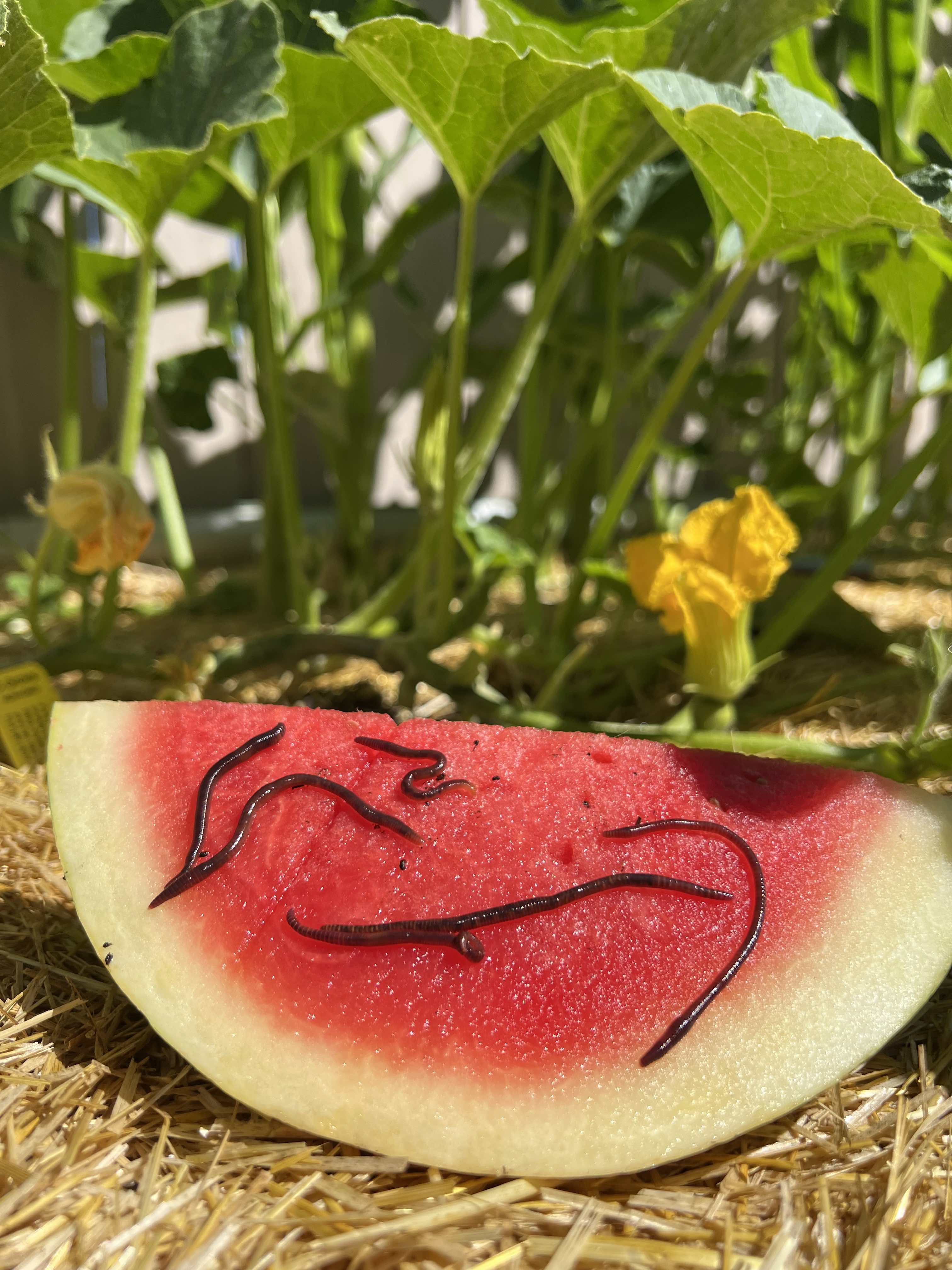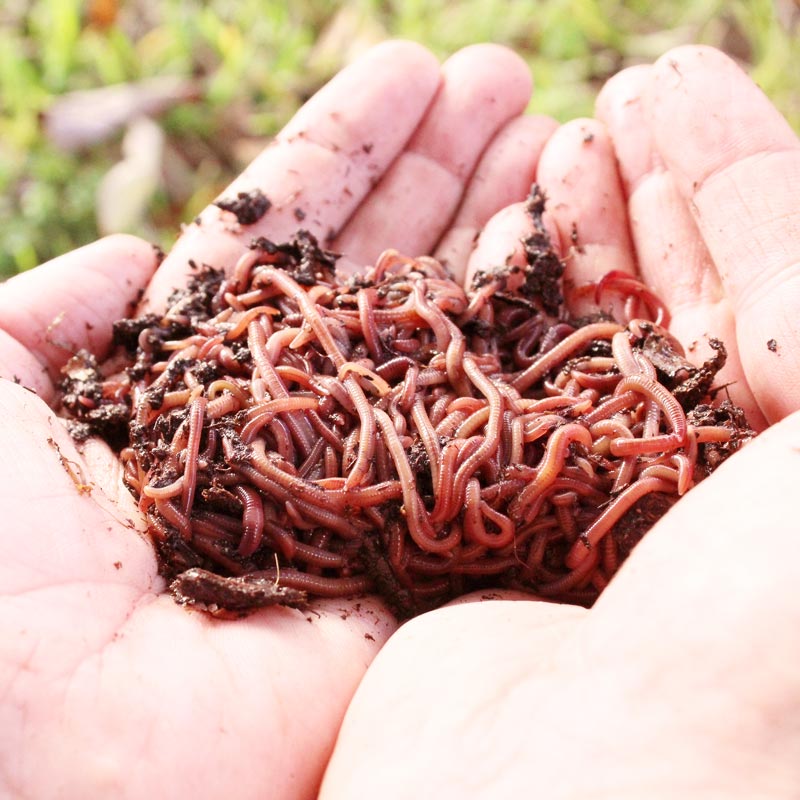Red Wiggler Worms - Perfect for Vermicomposting and Dirt Enrichment
Optimizing the Advantages of Red Wiggler Worms: A Comprehensive Manual for Home Gardeners and Urban Farmers
In the world of sustainable gardening techniques, red wiggler worms stand as unrecognized heroes, quietly transforming natural waste into nutrient-rich spreadings that can work marvels for soil health. As home garden enthusiasts and urban farmers significantly seek affordable and eco friendly methods to boost their gardens, the possible benefits of using the power of red wigglers can not be overstated. From decreasing kitchen area waste to growing much healthier plants, the utilization of these simple animals provides a plethora of advantages. By discovering the complexities of just how to efficiently care for and take full advantage of the benefits of red wiggler worms, people can open a wealth of opportunities for boosting the sustainability and efficiency of their gardening ventures.
Comprehending Red Wiggler Worms
Red Wiggler worms, renowned for their reliable composting capacities, are a varieties of earthworms extensively made use of in vermiculture practices. These worms, scientifically known as Eisenia fetida, flourish in rotting organic material, making them excellent candidates for composting.
One secret attribute of Red Wiggler worms is their reproductive price. These hermaphroditic animals possess both women and male reproductive body organs, permitting them to replicate rapidly under desirable problems. A mature Red Wiggler can create numerous spawn in a short period, making sure a steady populace within a composting system.

Setting Up a Worm Container
When developing a worm bin for vermiculture objectives, appropriate preparation and focus to detail are essential for developing a favorable environment for Red Wiggler worms. Begin by picking a suitable container for your worm container.

Location the worm bin in a trendy, dark place away from direct sunlight and severe temperature levels. Frequently keep an eye on the dampness degrees, including water if the bed linen feels dry or flaky. Feed the worms a well balanced diet regimen of vegetables and fruit scraps, avoiding citrus fruits, onions, and spicy foods. By following these steps, you can set up a flourishing worm bin that will efficiently process organic waste into nutrient-rich vermicompost for your garden.
Feeding and Keeping Worms
Ensuring a healthy and well balanced diet is critical for the health and performance of Red Wiggler worms in a vermiculture system. It is essential to prevent feeding them citrus fruits, onions, garlic, milk products, meat, and oily foods as these can be dangerous to the worms or create unpleasant odors in the container.
Proper dampness levels are likewise critical for the wellness of Red Wiggler worms. The bed linen needs to seem like a moist sponge, supplying adequate moisture for the worms to breathe with their skin. Frequently examine the dampness levels and adjust by adding water or completely dry bed linens product as needed. Furthermore, preserving correct temperature level problems between 55-77 ° F(13-25 ° C )will certainly make certain optimum worm activity and reproduction. By vigilantly monitoring their diet regimen, wetness, and environmental conditions, home gardeners and city farmers can maintain a healthy and balanced and effective Red Wiggler worm population for composting purposes. more tips here
Harvesting Worm Castings
To successfully extract nutrient-rich worm spreadings from the vermicompost, a systematic harvesting process is essential for maximizing the composting benefits. The initial action in harvesting worm castings is to urge the worms to migrate to one side of the bin.
After the spreadings have actually been harvested, it is vital to divide any remaining worms from the spreadings to stay clear of harming them during storage or application. One efficient approach is to create cone-shaped stacks of castings under brilliant light. Worms will intuitively relocate away from the light, enabling simple splitting up and removal.
Finally, the gathered worm spreadings need to be stored in an amazing, dark, and completely dry place to preserve their top quality and effectiveness as a nutrient-rich soil change. By adhering to these actions, home gardeners and urban farmers can maximize the benefits of red wiggler worms in their vermicomposting systems.
Making Use Of Worm Castings in Gardening
The consolidation of nutrient-rich worm spreadings into garden soil can dramatically boost plant development and total dirt wellness. Worm spreadings, also called vermicast, are a natural plant food created by red wiggler worms as they damage down organic matter. These castings are abundant in vital nutrients like nitrogen, phosphorus, potassium, and helpful microorganisms that promote plant growth and improve soil structure.
When utilizing worm spreadings in gardening, it is important to mix them thoroughly right into the soil or use them as a leading clothing around plants. The slow-release nature of worm castings ensures a steady supply of nutrients to plants with time, lowering the danger of nutrient leaching and promoting long-term dirt fertility. In addition, worm castings help boost dirt aeration, water retention, and microbial activity, developing a healthy and balanced atmosphere for plant origins to prosper.

Verdict
In verdict, the utilization of red wiggler worms in home gardening and metropolitan farming can considerably benefit soil health and plant growth. By recognizing exactly how to establish up and maintain a worm bin, feed the worms effectively, and gather their nutrient-rich castings, garden enthusiasts can take full advantage of the advantages of these earthworms.
In the realm of lasting horticulture techniques, red view it now wiggler worms stand as unrecognized heroes, quietly changing natural waste right into nutrient-rich spreadings that can function wonders for soil health.When developing a worm container for vermiculture functions, proper preparation and attention to information are important for creating a conducive environment for Red Wiggler worms. The initial action in gathering worm castings is to encourage the worms to move to one side of the container. Worm spreadings, likewise understood as vermicast, are a natural fertilizer produced by red wiggler worms as they damage down organic matter. By comprehending how to establish up and preserve a worm container, feed the worms appropriately, and collect their nutrient-rich spreadings, gardeners can optimize the advantages of these internet earthworms.